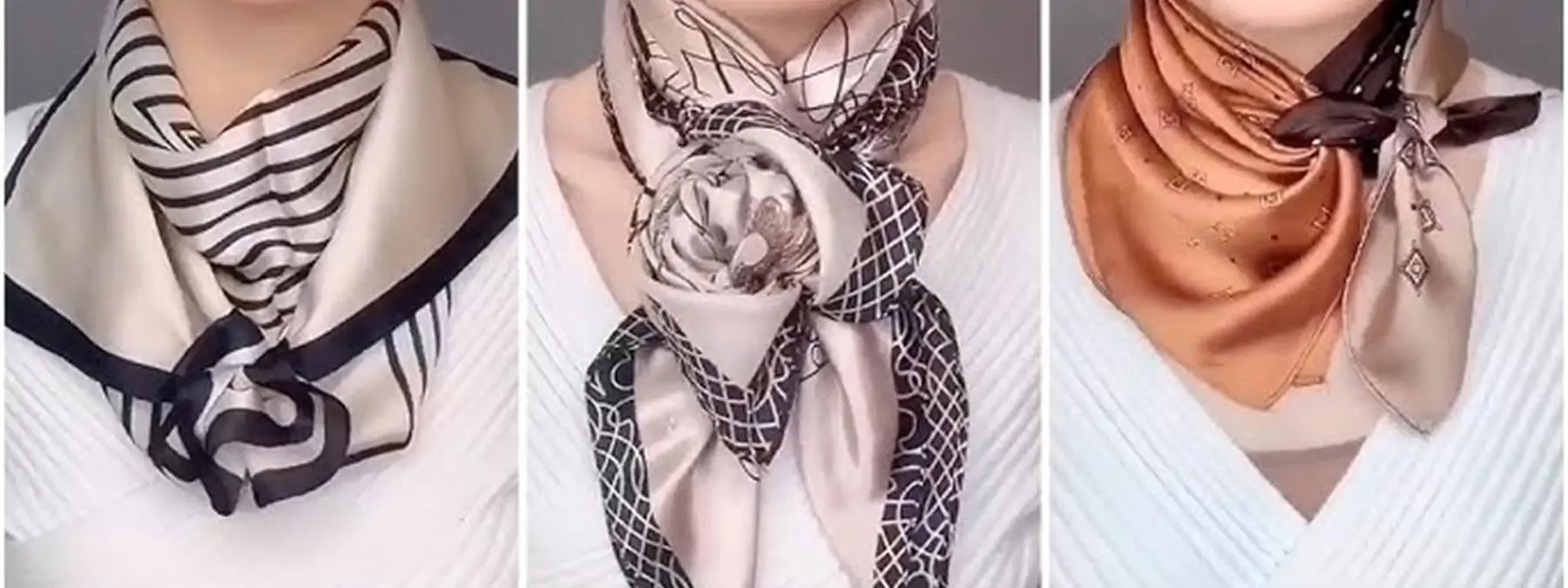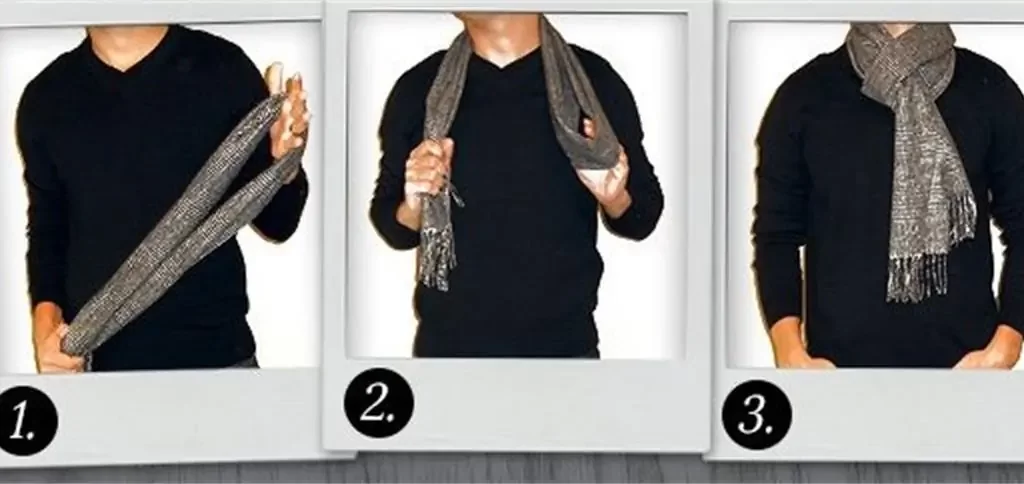Scarves have long been cherished as both functional and fashionable accessories. We will explore a wide array of techniques, styles, and creative ways to wear scarves.
Introduction
A scarf is more than just a piece of fabric; it’s a versatile canvas that allows us to express our personal style and creativity. Whether you’re looking to make a fashion statement, stay cozy in cold weather, or simply elevate your everyday attire, mastering the art of scarf tying is a valuable skill. In this comprehensive guide, we will cover everything you need to know about scarves, including selecting the right scarf, various scarf styles, scarf knots,and different uses for scarves.


Selecting the Perfect Scarf
Choosing the right scarf can make a significant difference in your overall look. Whether you’re picking one for fashion or functionality, here are some tips on how to choose the perfect scarf.
Consider the Fabric:
The first thing to consider when choosing a scarf is the fabric. Different fabrics offer different levels of warmth and comfort. Here are some popular scarf materials to consider:
- Wool: Wool scarves are warm and perfect for chilly weather. They come in various thicknesses, making them suitable for both winter and fall.
- Silk: Silk scarves are luxurious and lightweight. They add a touch of elegance to your outfit and are perfect for formal occasions.
- Cotton: Cotton scarves are breathable and suitable for spring and summer. They come in a wide range of colors and patterns.
- Cashmere: Cashmere scarves are incredibly soft and warm. They are a great choice for a cozy, stylish look.
Choose the Right Length and Width:
Scarves come in various lengths and widths. The choice depends on your style preference and how you plan to wear it. Here’s a general guideline:
- Short Scarves: Short scarves are typically around 55-65 inches long and 4-6 inches wide. They are great for adding a pop of color to your outfit or tying around your neck in a simple knot.
- Standard Scarves: Standard scarves are usually 70-80 inches long and 6-8 inches wide. They are versatile and can be worn in various ways, including draped, looped, or wrapped around your neck.
- Over sized Scarves: Over sized scarves, also known as blanket scarves, are larger, often around 80-100 inches long and 20-30 inches wide. They are perfect for bundling up in colder weather and can be worn as shawls.
Match with Your Wardrobe:
Consider your existing wardrobe when choosing a scarf. Think about the colors, patterns, and styles of your clothing to ensure that your scarf complements your outfits. A neutral-colored scarf can be a versatile addition to your collection as it can be paired with a wide range of clothing.
Think About the Season:
The season plays a significant role in choosing the right scarf. Lightweight scarves like silk or cotton are excellent for spring and summer, while thicker scarves like wool or cashmere are better suited for fall and winter. Make sure your scarf provides the right level of warmth for the weather conditions.
Personal Style:
Ultimately, your personal style should guide your scarf choice. Scarves come in a wide array of patterns, from classic stripes and plaid to bold prints and solids. Choose a pattern and style that reflects your personality and complements your fashion sense.
Scarf Usage
Scarves are versatile fashion accessories that can be worn in various ways to enhance your style and provide practical benefits, especially in colder weather. Here are some common ways people use scarves:
Neck Scarf:
The most traditional way to wear a scarf is to drape it around your neck, allowing the ends to hang down in front or looped around for added warmth. This classic style can be worn loosely for a casual look or tied snugly for extra warmth.
Infinity Scarf:
An infinity scarf is a closed loop that you can simply pull over your head. It’s easy to wear and provides a snug fit around your neck.
Headscarf:
Scarves can be wrapped around your head and tied in various styles to protect your hair, keep your head warm, or add a stylish touch to your outfit. This is particularly popular in the summer or for bohemian-inspired looks. keep your head cool in hot weather or protect it from the sun.
Shawl or Wrap:
In cooler weather, you can drape a large scarf over your shoulders like a shawl or wrap to add warmth and elegance to your outfit. This is a great way to accessorize dresses or evening wear.
Belted Scarf:
Transform your scarf into a chic belt by looping it through your belt loops and tying it at your waist. This is a unique way to add color and flair to your outfit.
Sarong or Beach Cover-Up:
When at the beach or pool, a lightweight scarf can be used as a sarong or beach cover-up by tying it around your waist or wrapping it around your body.
Face Covering:
In certain situations, such as during a pandemic, you can use a scarf as a makeshift face covering for added protection. Make sure to follow safety guidelines when doing so.
Gift Wrap:
Scarves make excellent gift wraps for small items. Simply use a scarf to wrap around a gift, tie it in a bow, and you have a beautifully wrapped present.
trendy bracelet:
Transform your scarf into a trendy bracelet by folding it into a narrow strip and wrapping it around your wrist multiple times. Tie it in a knot or a bow for added style.
Mastering the Art of Scarf Tying


The Parisian Knot
The Parisian Knot is a classic and refined way to wear your scarf.
Here’s how to tie it:
- Fold your scarf in half lengthwise.
- Loop the folded scarf around your neck.
- Pull the loose ends through the loop.
- Adjust the scarf for your desired snugness.


The Infinity Scarf
Infinity scarves are designed as continuous loops. To wear one, simply loop it around your neck once or twice, creating a cozy and stylish look. This style is particularly popular during colder seasons.
Here’s how to tie it:
- Create a loop with your scarf.
- Place it around your neck.
- Pull one end through the loop.
- Wrap the loop around your neck again.
The Shawl
A shawl-style scarf is larger and often rectangular in shape. You can drape it over your shoulders like a shawl, creating an elegant and dramatic effect. Shawl-style scarves are perfect for formal occasions or chilly evenings.
The Necktie Scarf
The Necktie Scarf mimics the look of a necktie and is ideal for achieving a polished and sophisticated appearance. This style involves wrapping the scarf closely around your neck and securing it with a knot.
Here’s how to tie it:
- Drape the scarf around your neck.
- Cross one end over the other.
- Pull one end through the loop.
- Tuck the other end into the loop.
The Loose Loop Knot
The Loose Loop Knot is a relaxed and comfortable knot perfect for casual occasions.
Here’s how to tie it:
- Drape the scarf around your neck, keeping one end longer than the other.
- Create a simple knot with the longer end.
- Allow the knot to hang loosely.
The European Loop
The European Loop is a stylish variation on the classic loop.
Here’s how to tie it:
- Fold the scarf in half lengthwise.
- Place the folded scarf around your neck.
- Pull the loose ends through the loop created by the fold.
- Adjust for desired snugness and style.
The Waterfall Knot
The Waterfall Knot is a trendy and eye-catching way to showcase your scarf.
Here’s how to tie it:
- Drape the scarf around your neck unevenly, with one end longer than the other.
- Tuck the longer end into the opposite side.
- Adjust the drape to your liking.
By mastering the art of scarf tying, you unlock a world of fashion possibilities. Embrace your creativity, experiment with different scarf styles and knots, and make every scarf you wear a reflection of your unique personality and style.
The Draped Elegance
If you prefer a more relaxed and casual look, consider the draped elegance style. Simply drape a long scarf loosely around your neck, allowing the ends to hang down. This laid-back and effortlessly stylish approach works wonderfully with lightweight scarves and complements a variety of outfits, from casual to dressy.
The Belted Scarf
Turn your scarf into a statement piece by using it as a belt. Fold the scarf lengthwise until it becomes a narrow band, and then thread it through the belt loops of your pants or jeans. Tie it in a knot or bow at the front or side to inject a burst of color and texture into your ensemble. This unconventional use of a scarf can instantly elevate a basic outfit into a fashion-forward statement.
Scarf Handling and Care
To ensure your scarf always looks its best, follow these tips for proper handling and care:
- Fold Neatly: Always fold your scarf neatly before tying or draping it. A well-folded scarf ensures a clean canvas to work with and a polished appearance.
- Adjust Tension: Pay attention to the tension of the scarf as you tie or drape it. The right tension ensures comfort and allows the scarf to hold its shape.
- Storage: Store your scarves properly by hanging them or laying them flat to prevent wrinkles. Avoid hanging them in direct sunlight, as prolonged exposure may cause fading.
So, the next time you reach for a scarf, remember that it’s not just an accessory; it’s a versatile tool for self-expression and a key element in your fashion arsenal.
